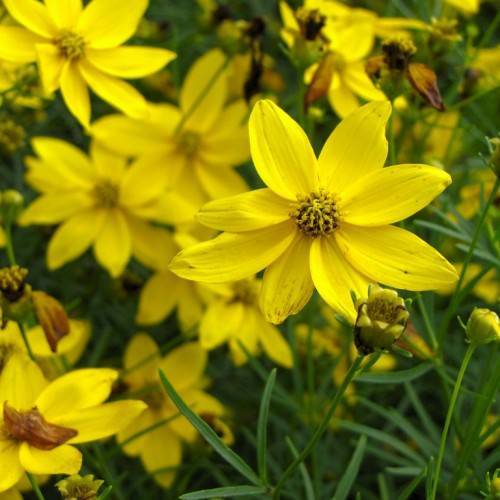
threadleaf coreopsis
Coreopsis verticillata 'Golden Gain'
Cycle:
Herbaceous Perennial
Watering:
Minimum
Hardiness Zone:
4 - 9
Flowers:
Flowers
Sun:
Full sun
Leaf:
Yes
Growth Rate:
Low
Maintenance:
Low
Salt Tolerant:
Yes
Care Level:
Easy
watering
Threadleaf coreopsis, also known as Golden Gain, requires regular watering for the first few months as it becomes established. For established plants, water once every 5-7 days. During times of heat and dryness, water every 3-4 days. It is best to water the plant directly and not from overhead, as this can cause fungal diseases. Be sure to water deeply - to saturate the soil around the plant's root zone - and then allow the soil to dry out before watering again. Avoid overwatering, as this could lead to root rot.
sunlight
Threadleaf coreopsis thrives in direct sunlight for at least 6 to 8 hours per day. This sun-loving species of plant prefers sunlight during the warmer months of the year when there is plenty for the entire day. During these times, Threadleaf Coreopsis should receive full sun – meaning, no shade from other plants or structures, like a fence or porch. In the cooler months, the plant may tolerate partial shade, although full sun is still preferred. Morning sun is recommended, as late-day sunshine can be too harsh for the plant, causing it to burn and die back.
pruning
Threadleaf Coreopsis (Coreopsis verticillata 'Golden Gain') should be pruned during late winter/early spring, just before the active growth period. The pruning should be minimal, as the plant does not require shaping or heavy clean-up. The dead flowers and any stray stems can be removed to tidy up the plant, but the spent flower clusters should not be removed as they are excellent sources of food for beneficial pollinators. If there are too many stems, a third of the stems can be removed to keep the plant healthy and vigorous.
